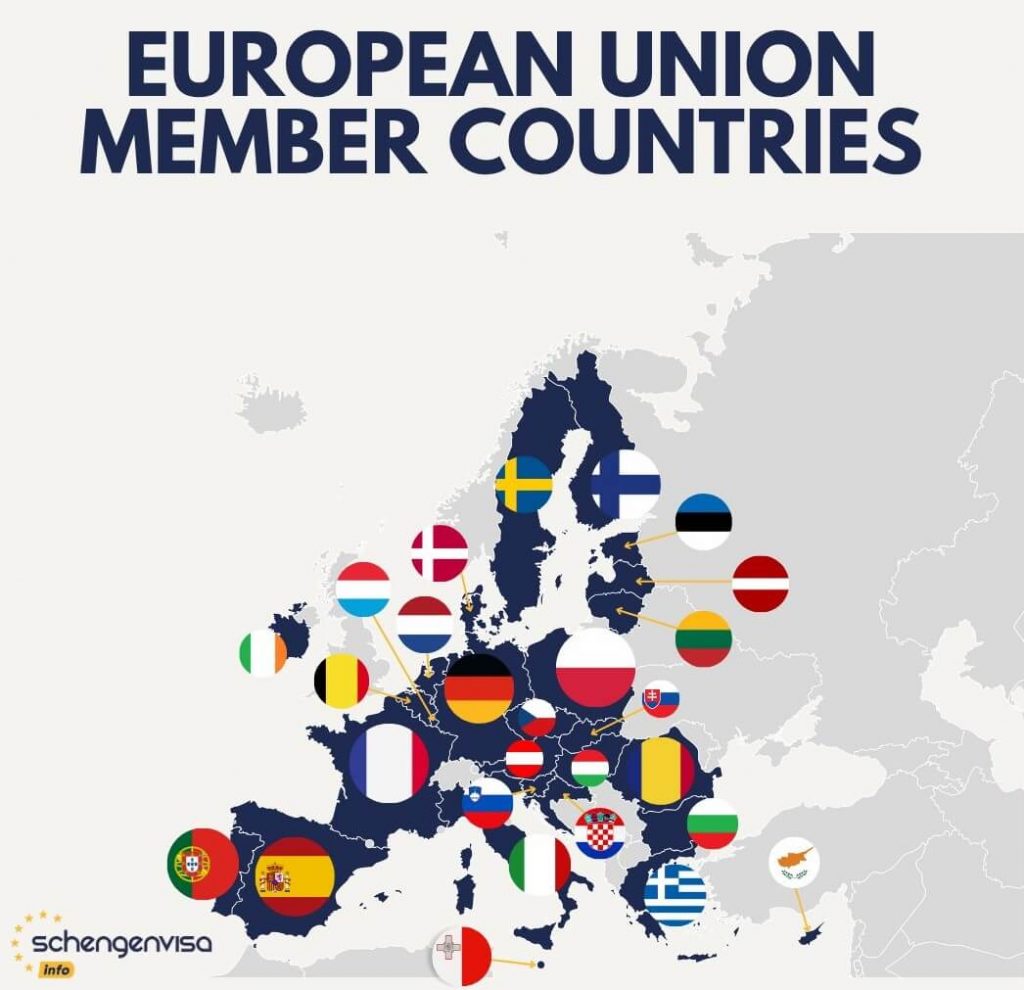The continental territories of the member states of the European Union (European Communities pre-1993), animated in order of accession. (Wikipedia)Present time — Some European countries are in the process of joining the EU.January 31, 2020 — The United Kingdom officially left the European Union, beginning an 11-month transition period.June 2016—The United Kingdom held a referendum, with 52% voting to leave the EU and 48% voting to remain.2013 — Croatia became the 28th member to join the EU.2009 — The Treaty of Lisbon entered into force, providing the EU with modern institutions and more efficient working methods in response to the 2008 global financial crisis.2000s — The euro became the new currency for many Europeans, with more countries adopting the euro.2004 and 2007 — Political divisions between East and West Europe resolved, leading to the accession of 10 new countries in 2004 and Bulgaria and Romania in 2007.1990s— The Schengen agreements gradually allowed for passport-free travel within the area.1990s — Significant treaties such as the ‘Maastricht’ Treaty on the European Union in 1993 and the Treaty of Amsterdam in 1999 were signed.1995 — The EU expanded with the accession of Austria, Finland, and Sweden.1993 — The completion of the ‘Single Market’ facilitated the free movement of goods, services, people, and money within the EU.1986 — The Single European Act laid the foundation for the ‘Single Market’.1973 — Denmark, Ireland and the United Kingdom joined the European Union, bringing the total member states to nine.1957 — The Treaty of Rome established the European Economic Community (EEC) or the ‘Common Market’, fostering economic and political integration.1950 —The European Coal and Steel Community initiated the economic and political unification of European countries to achieve lasting peace following the devastating Second World War.What Is the Difference Between the EU and Schengen?
The difference between EU countries and Schengen countries lies in their respective memberships and agreements:
EU countries are those within the European Union, bound by EU treaties and regulations. They maintain national militaries and foreign policies but are subject to EU institutions in judicial and legislative matters.Schengen countries, on the other hand, are those that have signed the Schengen Agreement. They function as a unified area with no internal border controls, facilitating travel within the zone. However, they still adhere to common international border control standards.
Please note that the EU and Schengen are not mutually exclusive as some countries are a part of the EU but not a part of Schengen and vice-versa.
EEA, EFTA, EU: What’s the Difference?
The EU is a unified agreement among several European countries, as listed above, while the EFTA and EEA are separate agreements aimed at fostering economic cooperation and integration with the EU as follows:
EFTA (European Free Trade Association). Comprising Iceland, Norway, Liechtenstein, and Switzerland, EFTA facilitates free trade among its members and the EU while helping them maintain some flexibility in following EU regulations. Although not EU members, EFTA countries participate in the Schengen Agreement.EEA (European Economic Area). In contrast, this is an agreement between EU members and Iceland, Norway, and Liechtenstein. It integrates these countries into the EU’s single market without them joining the EU, enabling the free movement of goods, services, people, and capital.
It’s important to note that Switzerland opts for separate bilateral agreements with the EU instead of joining the EEA.
Did you find this page helpful?
Yes No
Source link : https://www.schengenvisainfo.com/countries-in-europe/eu-countries/
Author :
Publish date : 2021-11-09 18:26:00
Copyright for syndicated content belongs to the linked Source.
